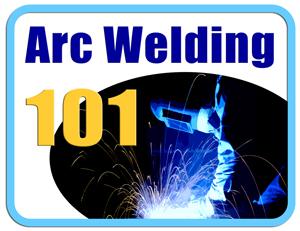- FMA
- The Fabricator
- FABTECH
- Canadian Metalworking
Categories
- Additive Manufacturing
- Aluminum Welding
- Arc Welding
- Assembly and Joining
- Automation and Robotics
- Bending and Forming
- Consumables
- Cutting and Weld Prep
- Electric Vehicles
- En Español
- Finishing
- Hydroforming
- Laser Cutting
- Laser Welding
- Machining
- Manufacturing Software
- Materials Handling
- Metals/Materials
- Oxyfuel Cutting
- Plasma Cutting
- Power Tools
- Punching and Other Holemaking
- Roll Forming
- Safety
- Sawing
- Shearing
- Shop Management
- Testing and Measuring
- Tube and Pipe Fabrication
- Tube and Pipe Production
- Waterjet Cutting
Industry Directory
Webcasts
Podcasts
FAB 40
Advertise
Subscribe
Account Login
Search
How to pass a weld test
Insights for good welders to do it the first time
- By Paul Cameron
- Updated February 29, 2024
- April 23, 2014
- Article
- Arc Welding
Q: Why do good welders fail weld tests?
A: Sometime around 1981, when unemployment rates were near 9 percent and after I had moved around from one bad job to another, I was given the opportunity to take the welder qualification test at Clyde Iron Works in Duluth, Minn. Passing the test meant an opportunity to join the USWA Local 1424 at $12 per hour. The four parts consisted of unlimited thickness, 3G, and 4G tests with both FCAW and SMAW.
Over the past 30 years I’ve administered hundreds if not thousands of welder qualification and procedure qualification record (PQR) tests and have found that there is nothing more frustrating than when a good welder fails. So why does it happen? I’ve come up with a few ideas on how to prevent it from happening to you.
Chill Out
When you enter the test booth, typically there’s a lot riding on your performance. Maybe you’ve been out of work for a while and finances are tight. Maybe there are 20 welders competing for two positions. Maybe passing the test secures that much-needed raise.
Relax. A welder qualification test is no different from the work you’ll do every day. You wouldn’t be in that booth if you weren’t ready for it.
Do Appropriate Prep Work
Don’t assume the prep work has been done for you. Remove any flame- or plasma-cut surface from the groove face. Remove any mill scale from the plate surface at least ¼ in. from the joint. If the bevel does not require a land (root face), grind it to a knife’s edge. If the bevel requires a land, make sure it’s consistent. Remove any mill scale from the backing plate. That joint should shine.
Read the WPS
If you are given a weld procedure specification (WPS), read it! What should your wire feed speed, current or voltage, and flow rate be? Look up that information and follow it! If you do that, you’re dang near there.
Remember Proper Technique
When given run-off tabs, use them. Just remember that backing bars should be 2 in. longer than the joint—that’s 1 in. at the start end and 1 in. at the finish end. Starting a weld on a run-off tab allows your eyes to focus and for the arc to settle down. Ending on a run-off tab ensures that you will fill the joint for its entire length. Don’t break the arc if you don’t have to. If you have to, break it in the center of the joint.
Bring a wire cutter and always cut the wire (filler or electrode) before striking the next arc. Clean the GMAW or FCAW shielding nozzle after every pass. If you’re performing GTAW, don’t allow the filler wire outside the shielding gas. When pipe welding, keep your tacks small and grind them if they’ll let you. Maintain your purge. Remember, as you finish your root, that purge gas needs someplace to go. Give it that opening.
Ask Questions
Ask questions, lots of them. Can you make adjustments to the machine? Can you use some practice material to adjust to this equipment? If you make a mistake, can you remove it with a grinder? What is the finish weld visual expectation? Why are you looking at me like that?
Even Good Welders Fail
I was at the dinner table when the Clyde Iron foreman called to let me know I had failed the 3G SMAW test. I was devastated. My Uncle Bud, who was a welding god, took me aside and said, “The only welder who’s never failed a weld test is the one who’s not been welding very long.” Three days later the foreman called back to say they were allowing me to take a retest.
There’s a special place in my heart for good welders who fail a weld test. But for your sake, don’t be that dude.
About the Author

Paul Cameron
Braun Intertec
4210 Highway 14 East
Rochester, MN 55904
About the Publication
subscribe now

The Welder, formerly known as Practical Welding Today, is a showcase of the real people who make the products we use and work with every day. This magazine has served the welding community in North America well for more than 20 years.
start your free subscription- Stay connected from anywhere

Easily access valuable industry resources now with full access to the digital edition of The Fabricator.

Easily access valuable industry resources now with full access to the digital edition of The Welder.

Easily access valuable industry resources now with full access to the digital edition of The Tube and Pipe Journal.
- Podcasting
- Podcast:
- The Fabricator Podcast
- Published:
- 04/16/2024
- Running Time:
- 63:29
In this episode of The Fabricator Podcast, Caleb Chamberlain, co-founder and CEO of OSH Cut, discusses his company’s...
- Industry Events
16th Annual Safety Conference
- April 30 - May 1, 2024
- Elgin,
Pipe and Tube Conference
- May 21 - 22, 2024
- Omaha, NE
World-Class Roll Forming Workshop
- June 5 - 6, 2024
- Louisville, KY
Advanced Laser Application Workshop
- June 25 - 27, 2024
- Novi, MI
































